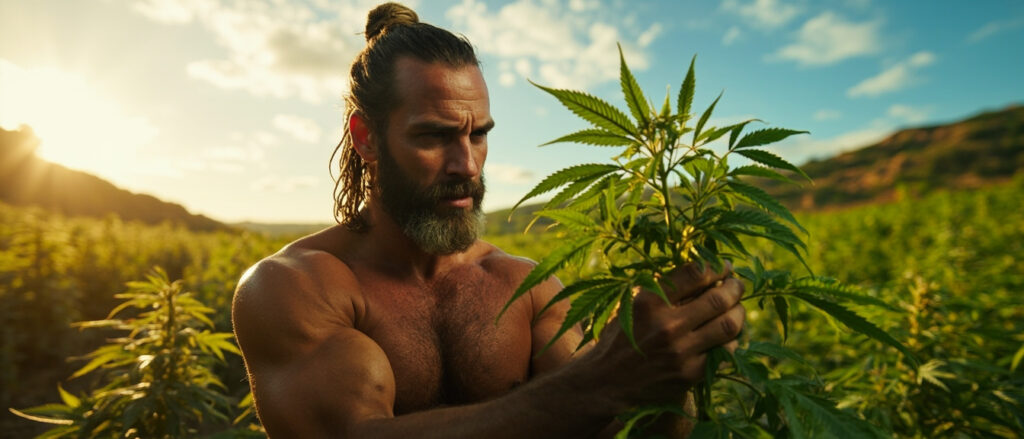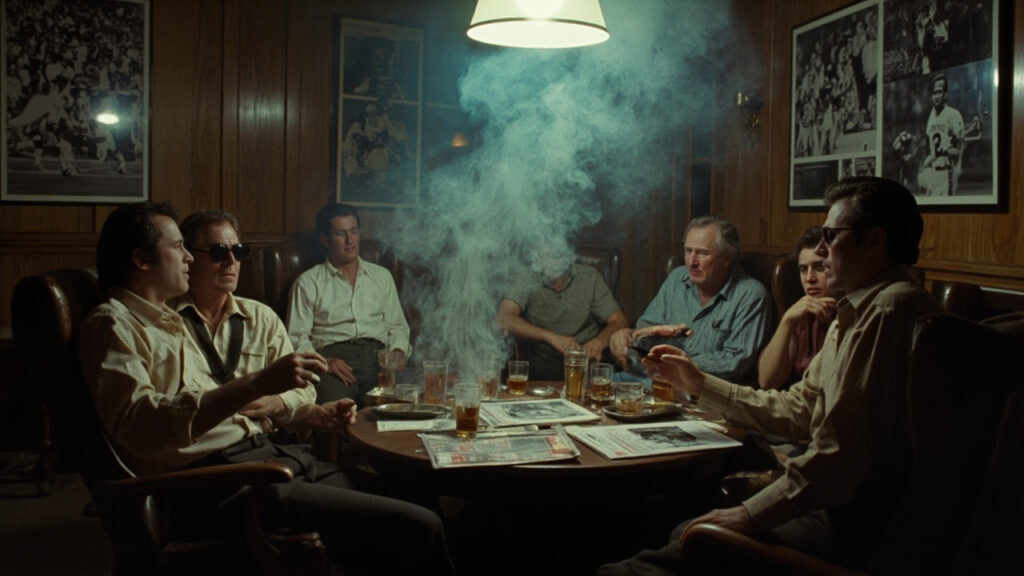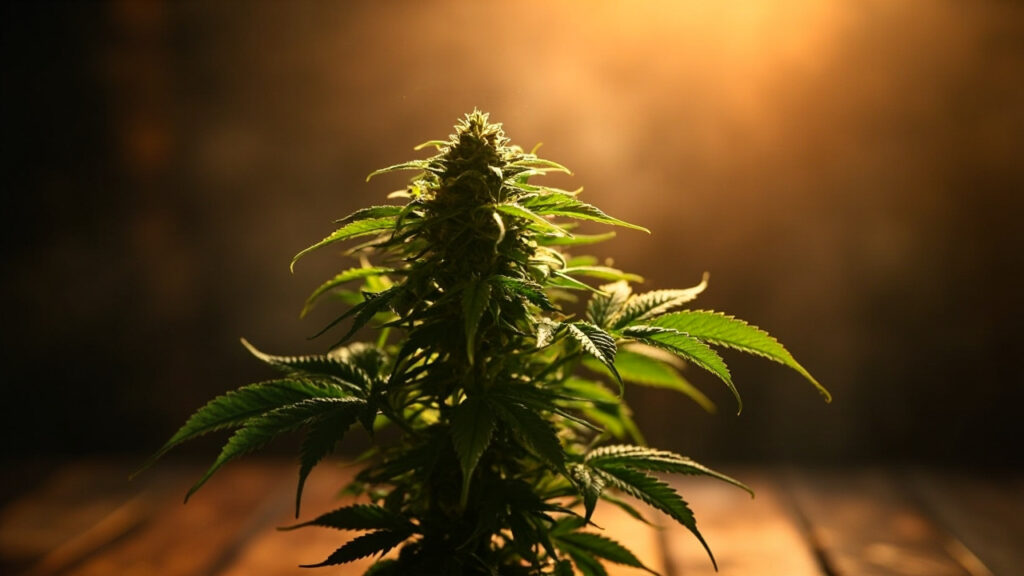Weed and sports might not seem like a natural pair to some, but for thousands of years, athletes have turned to cannabis for recovery, focus, relaxation, and pain management. Today, the connection between cannabis and athletes is out in the open, but the story did not start in dispensaries or training rooms. It began in secret, surrounded by stigma, and slowly moved toward the spotlight. We’re diving deep into the origin of weed in sports, tracing its history from ancient warriors to modern Olympians, from backroom joints to boardroom cannabis investments. This is not a story of scandal. It is a story of culture, resilience, and how athletes are changing the game with one plant.

Ancient Roots: Weed and Athletic Recovery Before the Modern Era
Cannabis has been part of human health rituals for millennia, and physical performance was no exception. In ancient China, cannabis was one of several herbs used in early medicinal formulas. Writings from the Han Dynasty describe the use of ma, or hemp, in pain treatments that could have supported warriors and laborers dealing with chronic inflammation or fatigue. In India, cannabis was part of religious and athletic culture. Yogis and ascetic warriors in regions practicing intense physical and spiritual discipline often drank bhang, a mixture of cannabis paste, milk, and spices. These were not recreational uses but rather ritualistic tools for endurance, pain management, and mental focus. Herodotus, writing about the Scythians, describes tribes who used cannabis vapor after battle in ceremonial tents. Their rituals likely served both spiritual and physical healing purposes, making cannabis one of the earliest known forms of athlete recovery.
The 20th Century: When Sports Went Silent About Weed
By the 1920s and 1930s, cannabis was criminalized in much of the Western world. The United States led the charge with a wave of anti-cannabis laws fueled by racial and political propaganda. Athletes who used cannabis during this time did so in secret. Even as sports grew in popularity, Major League Baseball, Olympic Games, professional boxing, the use of cannabis by athletes was almost never discussed publicly. It was hidden beneath layers of silence, misinformation, and fear of career-ending scandal. There were whispers in boxing circles. A few jazz-influenced baseball players were rumored to indulge. But the lack of drug testing allowed this shadow economy to persist without much scrutiny. Cannabis was available, but it was never discussed, documented, or normalized. Sports and weed lived parallel lives, never intersecting in public view.

The 1960s and 70s: Weed, Rebellion, and Recovery in the Locker Room
As the counterculture grew louder in the 1960s and 70s, cannabis returned to the public conversation. Musicians smoked openly. Political protests included calls for legalization. Athletes, however, still risked suspension or worse. Even so, cannabis began finding its way into training rooms. The era’s most iconic sports rebels, think Muhammad Ali, Joe Namath, and Bill Lee, challenged traditional ideas about toughness, race, and culture. Some were open about using marijuana to relax after games or during offseasons. Others remained quiet but used it nonetheless. Bill “Spaceman” Lee, pitcher for the Red Sox and Expos, openly admitted to smoking marijuana throughout his MLB career. He claimed it helped with stress and brought balance to the mental toll of pitching in front of tens of thousands of people. In the NBA, cannabis use became almost commonplace by the late 70s. According to former players and insiders, many teams had locker room circles after practices where joints were passed around like Gatorade.
Ricky Williams’ Story Before It Was Cool
Fast forward to the early 2000s. Cannabis was still taboo in pro sports, and Ricky Williams, a star NFL running back, became the face of that tension. Williams was suspended multiple times for testing positive for THC. Rather than continue fighting the system, he walked away from football in 2004 and began a personal journey that included yoga, holistic medicine, and cannabis. At the time, mainstream sports media branded him a quitter. But Ricky’s use of cannabis was not about rebellion. It was about mental health. Years later, he would found Real Wellness, a cannabis company focused on herbal blends for athletes and everyday people seeking alternatives to pharmaceuticals. Today, Williams is praised as a visionary. But back then, he was punished for seeing what the leagues refused to see. His story laid the groundwork for countless athletes to step forward with their own journeys of healing and resistance.
Michael Phelps and the Bong That Shocked the World
Michael Phelps is the most decorated Olympian in history. But in 2009, when a photo surfaced of him taking a bong hit at a college party, he faced a very different spotlight. Even though he had not failed a drug test and had just come off one of the greatest Olympic runs in history, he lost major sponsorships and had to issue a formal apology. The contrast was stark. Alcohol was fine. Champagne in locker rooms was a tradition. But cannabis? Still unacceptable in public. Phelps went on to speak about his depression, anxiety, and the overwhelming pressure of life after fame. Cannabis may not have been the problem. It may have been part of his coping strategy. Public reaction, however, was mixed. Some saw a young man making a mistake. Others saw hypocrisy in the way cannabis users were treated compared to drinkers. Over time, support for Phelps returned, but the incident remains a touchpoint in the conversation around cannabis, sports, and public image
Weed Enters the Wellness Era
By the 2010s, cannabis was becoming synonymous with wellness. The public stopped viewing it as a dangerous drug and started recognizing it as a tool for healing. Athletes began talking more openly about how they used cannabis to sleep, to heal, and to handle the stress of competition. CBD oils became household products. THC topicals gained popularity among runners, weightlifters, and martial artists. And dispensaries no longer felt like shadowy storefronts. They looked more like high-end juice bars. In neighborhoods across New York, including those served by a cannabis dispensary brighton beach, everyday athletes were exploring cannabis for better recovery and pain relief. These were not stoners. These were soccer moms, high school coaches, marathoners, and gym rats. They wanted real results without the side effects of prescription medication.
Professional Leagues Start to Shift
As cultural momentum built, sports leagues began reevaluating their rules. The NBA stopped testing for cannabis during the pandemic and has maintained that policy. The NFL allows players to use cannabis during the offseason without fear of suspension. MLB removed cannabis from its banned substance list altogether. The UFC partners with cannabis companies to study CBD’s effects on pain and inflammation. Meanwhile, athletes have become entrepreneurs in the cannabis space. Kevin Durant, Al Harrington, and Calvin Johnson are just a few who have launched cannabis businesses. They are not just advocates. They are investors, educators, and changemakers. Some leagues still lag behind. The Olympics and NCAA continue to impose harsh penalties. But the overall direction is clear. Cannabis is no longer a career-killer. It is a conversation starter.
The Science Behind the Plant
Cannabis is not a performance enhancer in the traditional sense. It does not build muscle or increase speed. What it does is support the body’s natural recovery systems. Cannabis reduces inflammation, helps manage pain, improves sleep quality, and supports nervous system balance. These benefits are crucial for athletes. Some use CBD in the morning for focus. Others use THC at night for rest. Many use topicals after workouts to reduce soreness and prevent injury. Cannabis interacts with the endocannabinoid system to restore equilibrium. It helps the body and brain recover more effectively. Unlike opioids, it carries no risk of overdose. Unlike NSAIDs, it does not damage the liver or gut. For athletes who once relied on Vicodin, Ambien, or benzos, cannabis is a lifeline. It allows them to stay in the game longer and retire in better health.

From Secret Use to Center Stage
What was once whispered about in locker rooms is now being shouted from the rooftops. Athletes no longer feel the need to hide their use of cannabis. Instead, they are celebrating it. They are hosting cannabis education panels, investing in dispensaries, and teaming up with researchers. This shift reflects something deeper than legalization. It reflects a culture finally catching up with its champions. From the steam baths of ancient warriors to the water pipes of Olympians, cannabis has been quietly helping athletes recover for centuries. The only thing that has changed is our willingness to talk about it. Fans are more accepting. Media coverage is less judgmental. And the science continues to back it up. Every time an athlete shares their cannabis story, it chips away at the stigma for the next generation.

Global Sports and the Cannabis Gap
One of the biggest hurdles still facing cannabis reform in sports is the lack of global consistency. While professional leagues in the United States and Canada have begun adjusting their policies, international sports bodies continue to enforce outdated rules. The World Anti-Doping Agency, which oversees drug testing at the Olympics, still includes cannabis on its list of banned substances. That means athletes from countries with legal cannabis can still be disqualified for use, even when it has no bearing on performance. Sha’Carri Richardson’s Olympic suspension in 2021 reignited this debate, especially since she consumed cannabis in a state where it was fully legal. The global patchwork of cannabis laws creates confusion for athletes who compete across borders. Until WADA and similar agencies modernize their policies, athletes will continue to face penalties for something that is both medically and legally accepted at home.
Cannabis and the College Athlete
While professional leagues are starting to embrace cannabis education, college sports have been much slower to evolve. The National Collegiate Athletic Association maintains strict testing rules, and even a single positive test for THC can lead to suspension. For student-athletes balancing academics, competition, and limited access to healthcare, this stance can be devastating. It prevents them from exploring natural solutions to pain, sleep issues, or anxiety. Some universities are beginning to challenge these guidelines and offer educational resources about cannabis and its therapeutic benefits. However, most college athletes remain in a precarious position, where using a topical cream or consuming CBD gummies could cost them their scholarship. Reform in college athletics may be the next battleground in the larger push for cannabis normalization in sports.
The Future of Weed in Sports
Looking ahead, cannabis will likely become part of every serious athletic discussion, from locker room recovery routines to sports medicine curriculums. As legalization expands and stigma fades, cannabis will no longer be seen as a rebellious act but as a smart strategy for longevity and health. Sponsorship deals between cannabis companies and sports teams are already starting to appear, and it won’t be long before CBD-infused beverages and THC-free recovery tools are standard on training tables. The athletes of tomorrow will grow up in a world where cannabis is part of the performance conversation. It is no longer a question of if cannabis belongs in sports. It is a matter of how soon it will be fully accepted, integrated, and understood.
Final Thoughts: The New Playbook
The origin of weed in sports is not a side note. It is a central part of how athletes have survived, healed, and grown in some of the most demanding environments on earth. Today’s athletes are not just users. They are educators and leaders in a broader cultural movement that links cannabis with strength, resilience, and recovery. From ancient battlegrounds to modern-day dispensaries, cannabis continues to prove that it has a place in the world of sports. And now, finally, that place is no longer in the shadows. It is in plain view, with medals, microphones, and a growing sense of pride. The next chapter belongs to the athletes who will compete openly, recover openly, and live honestly with cannabis in their toolkit.


